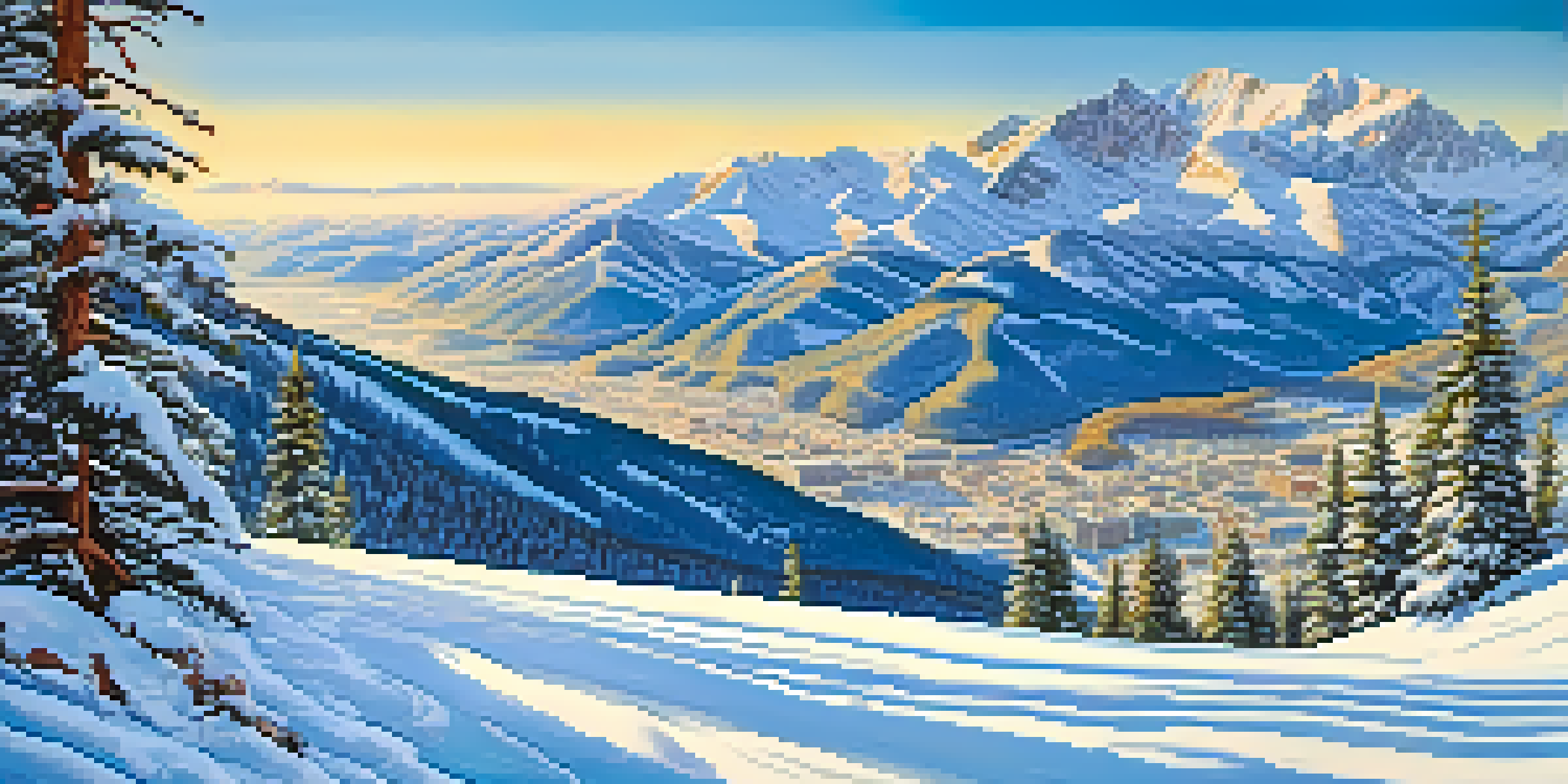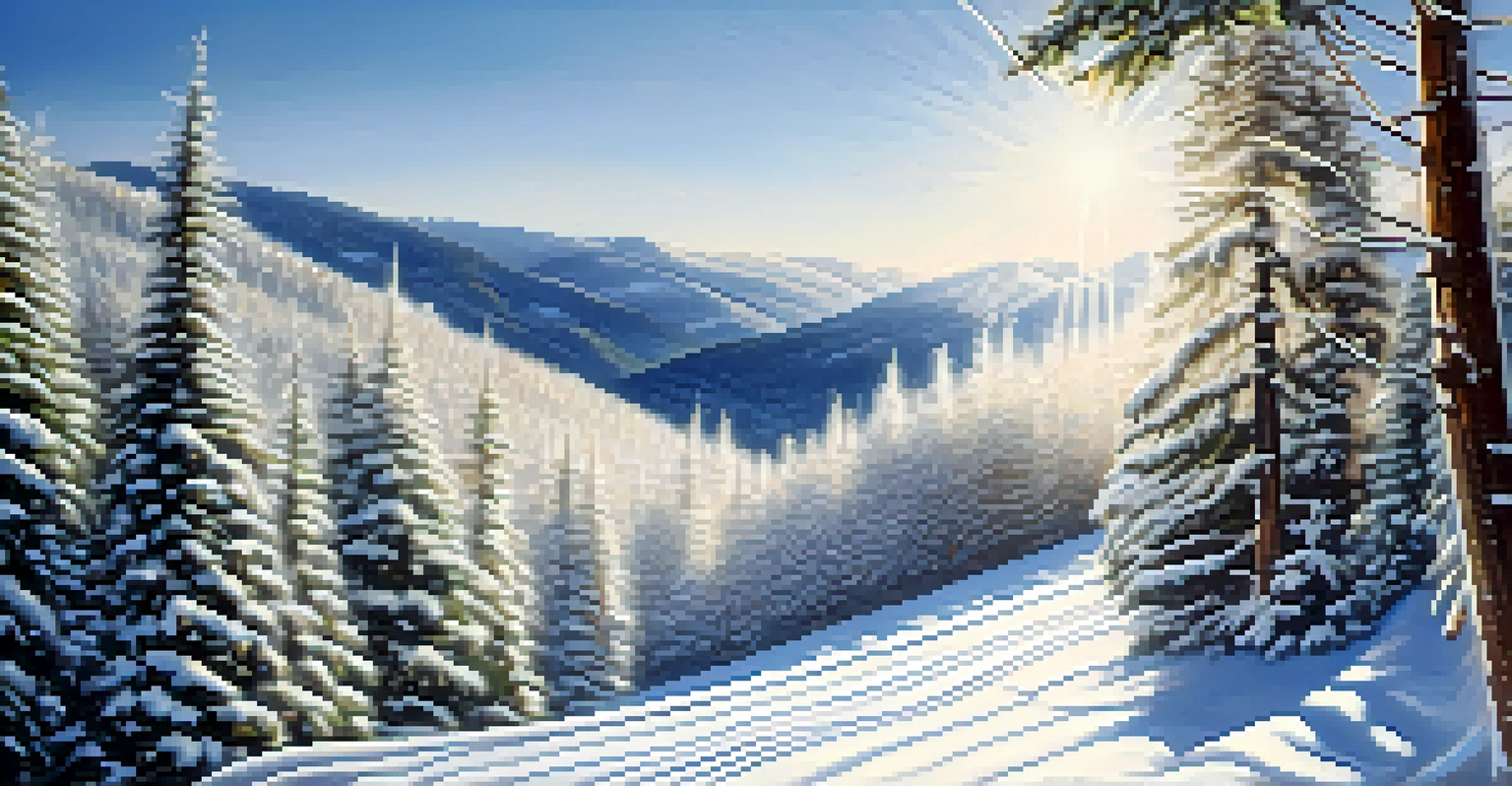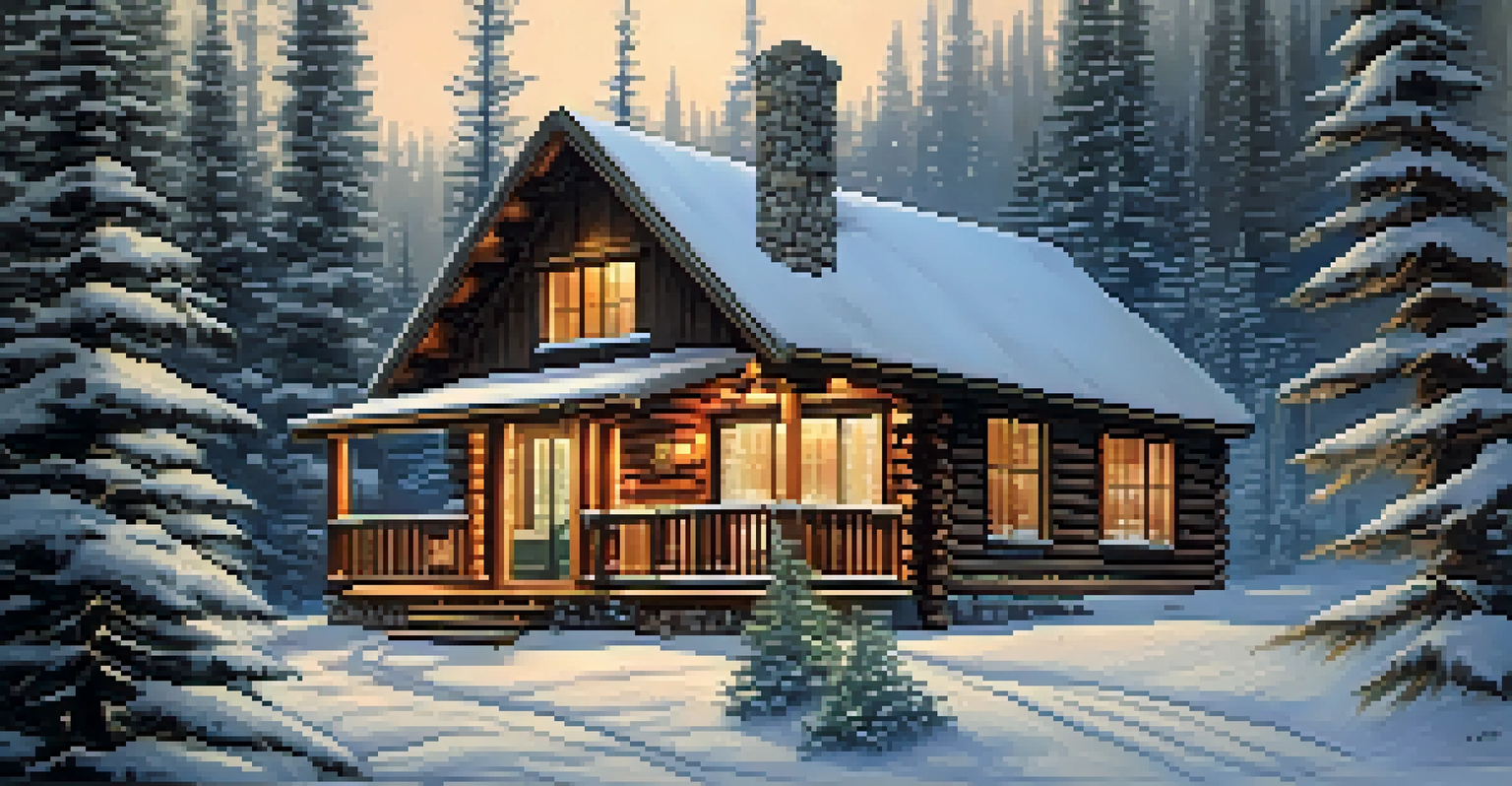Winter Weather Patterns and Their Impact on Colorado Skiing

Understanding Colorado's Unique Winter Weather Patterns
Colorado's winter weather is a captivating blend of conditions, influenced by its mountainous terrain. The state's elevation creates diverse microclimates, which can lead to sudden shifts in temperature and snowfall. For skiers, these patterns can mean everything from powder-filled slopes to icy runs, making it essential to stay informed about current conditions.
The mountains are calling and I must go.
One of the most significant influences on Colorado's winter weather is the Pacific Jet Stream, which can bring moisture-laden storms into the region. This stream often creates ideal conditions for snowfall, particularly in the northern and central Rockies. Understanding where these storms are headed can help skiers choose the best mountains to visit for optimal skiing conditions.
Additionally, local phenomena such as the Colorado Low and Chinook winds can dramatically affect snowfall in various areas. The Colorado Low can bring intense snowstorms, while Chinook winds can lead to warmer temperatures and rapid snow melting. This variability illustrates why skiers need to be adaptable and aware of the ever-changing weather landscape.
The Role of Elevation in Ski Conditions
Elevation plays a critical role in determining skiing conditions across Colorado. Higher altitudes generally receive more snowfall and maintain colder temperatures, which are ideal for preserving snow quality. Resorts like Breckenridge and Aspen, sitting at elevations over 9,000 feet, often boast better conditions than lower-altitude areas.

However, skiing at high elevations also comes with its own set of challenges, such as increased exposure to high winds and sudden weather changes. Skiers should be prepared for rapidly shifting conditions and take necessary precautions when venturing into higher terrain. Understanding your limits and acclimating to altitude can make for a safer and more enjoyable experience.
Colorado's Weather Impacts Skiing
Understanding Colorado's unique winter weather patterns, influenced by elevation and storm systems, is crucial for skiers to optimize their experience.
For skiers, knowing the elevation of the slopes they plan to visit is crucial for planning their trips. It can be the difference between enjoying fresh powder or dealing with slushy conditions. A quick check of the resort's elevation and current weather can guide your skiing adventures.
Impact of Snowfall Variability on Ski Resorts
Ski resorts in Colorado experience significant variability in snowfall from season to season. Some years may bring abundant snow, creating a skier's paradise, while others could result in disappointing conditions. This inconsistency can greatly influence resort operations and skier satisfaction, highlighting the importance of monitoring weather forecasts.
Skiing is a dance, and the mountain always leads.
For instance, resorts like Vail and Telluride often rely on the snowfall patterns to determine their opening dates and overall winter strategy. When the snow is plentiful, they can offer a wider range of runs and features, attracting more visitors. Conversely, lower snowfall years can lead to limited terrain and reduced visitor numbers, impacting the local economy.
Skiers can adapt to this variability by diversifying their winter plans. Exploring different resorts, understanding historical snowfall trends, and keeping an eye on weather reports can help ensure a great skiing experience, regardless of the season's unpredictability.
How Temperature Fluctuations Affect Skiing
Temperature fluctuations are another critical factor that influences skiing conditions in Colorado. A warm spell can lead to melting snow and slushy conditions, while colder temperatures help preserve the quality of the snow. Skiers should keep an eye on the forecast to understand how these changes might affect their day on the slopes.
In addition to affecting snow quality, temperature changes can also impact skier safety. Sudden drops in temperature can create icy patches on trails, making conditions more challenging. Skiers need to be vigilant in assessing the slope conditions and preparing accordingly with proper gear and techniques.
Snowfall Variability Affects Resorts
The significant variability in snowfall from season to season can impact ski resort operations and the overall skier experience.
Understanding how temperature interacts with snowfall can make a significant difference in the skiing experience. For example, seeking higher elevations or north-facing slopes can often yield better conditions during warmer periods. Being informed is key to making the most of your time on the mountain.
The Influence of Storm Patterns on Ski Season Duration
Storm patterns directly influence how long the ski season lasts in Colorado. A series of late-season storms can extend the skiing experience well into spring, while a lack of snowfall can cut the season short. Ski resorts often rely on these patterns to determine their closing dates and manage operations throughout the winter.
For example, resorts in the northern Rockies often see storms rolling in later in the season, providing a bonus for late-season skiers. These storms can re-energize the slopes just when skiers thought the season was winding down. Staying updated on storm forecasts can help skiers capitalize on these opportunities.
Ultimately, understanding storm patterns and their effects can lead to a more fulfilling skiing experience. Being flexible with your plans and aware of upcoming weather can make all the difference in maximizing your time on the slopes.
Adapting to Climate Change in Skiing
Climate change is increasingly impacting winter weather patterns in Colorado, posing challenges for the skiing industry. Rising temperatures can lead to shorter seasons and more unpredictable snowfall, which affects not just ski resorts but also the local economy. Understanding these changes is crucial for skiers who want to adapt their plans.
Ski resorts are responding to these challenges by investing in snow-making technology and implementing environmentally friendly practices. These adaptations help ensure that they can provide quality skiing experiences, even as natural snowfall becomes less reliable. Skiers can support these efforts by choosing resorts that prioritize sustainability.
Climate Change Challenges Skiing
Rising temperatures and unpredictable snowfall due to climate change are prompting resorts to adapt through sustainable practices and technology.
As skiers, being mindful of climate change can also influence our choices on the slopes. By opting for eco-friendly gear, supporting local initiatives, and practicing responsible skiing, we can help mitigate some of the impacts on our beloved winter landscapes.
Planning Your Ski Trip with Weather Insights
When planning a ski trip in Colorado, it’s essential to consider weather insights to make the most of your experience. Researching historical snowfall data and current conditions can help you choose the right resort and time for your visit. A little preparation goes a long way in ensuring a successful trip.
Utilizing weather apps and websites can provide real-time updates on conditions, helping you stay informed about changes. Many resorts also offer snow reports and updates, so checking these resources can guide your decisions about where to ski. This information can empower you to find the best conditions and avoid potential disappointments.

Ultimately, the key to a great skiing experience lies in being proactive and adaptable. By staying informed about weather patterns and their impact on skiing, you can ensure that your time on the slopes is both enjoyable and memorable.